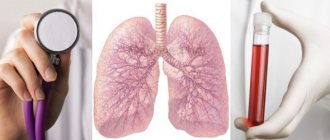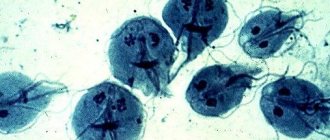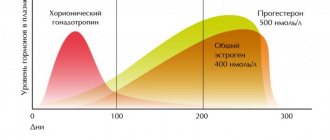Indications for use
There are categories of professions that require periodic blood testing for HIV. Donors who donate blood for transfusions and blood products, eggs and sperm are constantly checked. People who cross the border and foreigners applying for citizenship are required to be examined.
If there are no special indications, you need to take tests for HIV and AIDS under the following circumstances:
- pregnancy is planned;
- before the upcoming operation;
- with a sudden loss of body weight for no apparent reason;
- if you had unprotected sexual intercourse with a stranger;
- when injecting with a non-sterile needle;
- if an accident occurs in which a medical worker pricks himself with an injection needle contaminated with biomaterial.
The patient is always interested in knowing how long after a possible infection to donate blood for HIV. A study can be carried out to exclude its presence in the body using two methods. Each AIDS test is carried out at a certain period of time away from the time of contact with the suspected infected person. If more than three months have passed since the suspicious relationship or accident at the workplace, then an enzyme immunoassay can already be done. This analysis is very indicative; it can detect even a very small number of antibodies. If you do the test before this time, the result can be negative, even if the person is infected.
The second technique is more modern. It is based on the polymerase chain reaction. This is the so-called express analysis. You can find out the result of this HIV test 21 days after exposure. This study is quite complex and is carried out in specially equipped laboratories. Before analysis, you need to read reviews about the work of this center.
You can find out whether there is a deadly infection in your body completely anonymously. There is no need to take a referral from a doctor for testing. You just need to remember what number the test tube is under. This way you can find out the result simply by the number.
There are now many opportunities for those wishing to be examined for infection with this virus.
Symptoms and stages of infection development
Soon after entering the body, no matter which way - injection or sexual intercourse, the pathogenic organism cannot be detected.
At first, the number of virus replications is very small, antibodies are just beginning to be produced. All tests have a sensitivity threshold; at this stage they simply will not show anything. If you plan to use a standard enzyme immunoassay, which is used in AIDS centers, how long to wait after a risky relationship, when to take an HIV test, infectious disease specialists say that three months is more than enough. Of course, during the “gray window” period you need to protect yourself, even if the test is still negative, the virus can already be transmitted to your partner. And if there are assumptions about the transmission of STIs, then for sexually transmitted diseases, how long after to get tested for STIs depends on the incubation period, it is different for syphilis, gonorrhea, chlamydia and others. As a rule, they can be detected much earlier than HIV. The answer to the question of when to do an analysis after a risky contact, if there was a risk of infection, is to visit a medical institution after twenty-eight days, but it is better to make sure again after ninety days by donating the biomaterial again.
Where can I get tested and how much does it cost?
Many have had to deal with the problem of where to donate blood, what kind of HIV test is needed to find out their status or get a certificate. There are now many opportunities for those wishing to be examined for infection with this virus. Probably everyone has seen mobile laboratories where they do rapid testing for carriers of a dangerous infection and where you can test for HIV for free without any problems. Should you trust them?
You can trust such centers, but it would be a good idea to ask them for certificates and licenses. Moreover, this is a good option for those who are interested in where they can get a free HIV test. You cannot interpret the result yourself, even if it turned out to be positive. This doesn't mean anything yet. It just confirms the need for a thorough examination followed by consultation with a doctor.
The most effective research will be in a specialized laboratory. A natural question in this case will be how much it costs to take an HIV test. Depending on the complexity, sensitivity of the technique used and the qualification level of the institution, the cost ranges from 600 to 4000 rubles.
Now the level of carriage and even mortality from AIDS is unusually high, so you shouldn’t think long about where you can get tested for HIV infection. After all, almost everyone in their life could have circumstances under which infection is possible. People who have never been examined should at least take the express test for free, which is available in every medical institution and pharmacy where you can buy it inexpensively.
Even the free survey is conducted anonymously
Express research
It is one of the fastest and most effective research methods and allows you to determine in the shortest possible time and without the use of special equipment whether there is an immunodeficiency virus in the body. This method of research is becoming more and more popular, pushing aside all others. There is no need to even visit a medical facility to take the test.
The tests can be purchased at pharmacies and are sold over-the-counter. The test shows the presence of antibodies in the body through saliva, and the result can be obtained almost instantly. However, it cannot be called highly accurate. If the result shows a positive result, then it will be necessary to undergo additional examination. How many days does a blood test for HIV take? This is a common question.
Sometimes you can get tested for HIV immediately. The turnaround time for express diagnostics is about 5 minutes. We are talking about a not entirely accurate, but still effective study. It is used extremely rarely in Russia.
What is meant by this analysis? The most common rapid test. It looks like a special strip on which you need to drip blood. After 5-10 minutes, look at the result. It can be either positive or negative. The effect of this type of diagnosis can be compared to a pregnancy test.
This type of HIV testing is not in great demand. This is because there is a high probability of errors and inaccurate results. In addition, such a test does not help determine the type of infection.
Is it possible to take an HIV test anonymously?
It is impossible to be sure of a negative result, so it is better to be examined anonymously. How can you donate blood for HIV so that only the person being tested knows about the result? All conditions have been created for this in medical institutions. The tube into which the biological material is collected is numbered, which eliminates the risk of confusing the results. After the patient has taken the HIV test, he is told this number, which he must remember. He can find out the result by this number.
Most laboratories use just such a system, so being examined incognito is completely easy. None of the medical professionals will know what exactly your result is. Even the free survey is conducted anonymously. Thus, the patient can avoid unnecessary questions from relatives and friends.
What can affect the result
No modern laboratory can give an absolute guarantee that the analysis results are reliable. This is due to the fact that there are many factors that can influence the result.
These include the following:
- For some reason, the equipment in the laboratory became faulty.
- Transportation of biological material was carried out in violation of regulations.
- Human factor. For example, a nurse mixed up the tubes while drawing blood. As a result, the patient received another person's test results.
- The infection occurred very recently.
- The patient ignored the need for preparation. For example, I ate or drank before donating blood.
- The patient’s body has pathologies, the course of which is associated with metabolic disorders.
Doctors recommend that women donate blood for HIV several times during pregnancy. This need is due to the fact that the body undergoes changes during gestation that can affect the result.
In isolated cases, in people with AIDS, the defense system may not respond to antibodies. As a rule, this is a consequence of blood transfusion, long-term treatment with potent medications, or organ transplantation.
How to get tested for HIV
Taking a rapid test, ELISA, and other types of HIV tests is not at all difficult. The greatest number of questions can be heard regarding preparation for the test. Users are interested in whether an HIV test should be taken on an empty stomach or not. No special preparation is needed. You must go to the laboratory or manipulation room of the medical institution, where the blood will be drawn. To do this, you should follow some simple rules:
- are tested for HIV on an empty stomach. For those who are wondering whether it is possible to drink tea and coffee before going to the study, the answer is that this is not recommended. The concept of “on an empty stomach” implies the complete exclusion of any food and drink. It is not advisable to drink even large quantities of water. It is better to stop eating any food at six o'clock in the evening the night before donating blood;
- Avoid drinking alcohol three days before the test. Alcohol tinctures of medications should also not be consumed the day before;
- the day before the test, it is better to exclude spicy, salty, and sour foods;
- to the question whether it is possible to donate blood during menstruation, there is only one answer - no, it is not advisable;
- it is necessary to exclude any medications and physical procedures;
- If you are wondering whether you can smoke before donating blood, the answer will be: it is recommended not to smoke for one hour before the examination.
Many people are concerned about where blood is taken for this type of diagnosis. Most often, blood serum is used for diagnosis. For this purpose, you need to donate blood from a vein. For express methods, capillary blood can be used, which is taken from a finger on the hand.
Most often, blood serum is used for diagnosis.
How can you get infected?
Today, medicine knows several methods of infection:
- intimate relationships,
- Lack of condom
- Blood transfusion,
- Medical syringes, etc.
The body is trying to fight the infection, it is actively producing antibodies, at this time it is advisable to take a blood test to detect destructive viruses.
The main problem of AIDS remains the inability to detect the disease at the very beginning. If you donate blood to a laboratory for HIV immediately after exposure, the infection can be quickly detected.
What tests are taken for verification?
If there are suspicions about their status for HIV and AIDS, many people think about what tests they take to check. The most accurate studies are those that can identify a dangerous virus in the first stages of its introduction. From the moment the pathogen enters the body until antibodies to it appear, a certain time passes - this period averages one to three months. After this period, if a person is infected, blood markers for sensitivity to HIV infection will be positive.
There are qualitative and quantitative tests for the presence of a retrovirus. Each of them has its own pros and cons. Qualitative Research:
- this study is medically called ELISA or enzyme-linked immunosorbent assay and detects the presence of antibodies to type I and II antigens;
- Immunoblotting is a blood variation test. Based on the data from this study and ELISA, specialists can obtain the most accurate data. In this case, viral antigens are separated by molecular weight.
Quantitative methods:
- ICHLA - chemiluminescent immunoassay for the presence of a retrovirus has almost 99% accuracy. The study requires special reagents and a plate with cells;
- PCR or polymerase chain reaction indicates the concentration of retrovirus RNA in the blood. When asked what accurate test to take to confirm or refute the presence of HIV, you can answer that this technique is one of the most accurate and early. It can be used even a week after the suspected questionable contact. It is perfect during pregnancy and for babies immediately after birth, as well as for monitoring ongoing therapeutic measures;
- a study that allows you to estimate the number of T-lymphocytes in 1 mm3 of blood. This is achieved by isolating CD4 markers. In healthy people, the number of T cells is 1200-3000 units per microliter.
In addition to specific studies, the patient must undergo a complete examination of the body and pass the entire standard set of tests. When a retrovirus enters the body, it affects many indicators, including changes in health status, which will be shown by a clinical and biochemical blood test.
A general blood test is not a specific test for AIDS.
Types of research
Diagnosing HIV is impossible without laboratory testing, i.e. its establishment is not allowed on the basis of anamnesis, patient testimony and visual examination. There are several types of analyzes, each of which has specific features.
Express research
The fastest and most effective analysis that allows you to quickly determine the presence (absence) of the human immunodeficiency virus in the body. It can be completed completely anonymously and without the use of special equipment.
To carry out the test, you need to purchase them at a pharmacy (available without a doctor's prescription). A visit to a medical facility is not required. The test shows the result using saliva, but if the result is positive, you will need to be examined in a hospital.
Enzyme immunoassay study
It is based on the collection and subsequent examination of the patient’s venous blood in order to detect antibodies to HIV. Enzyme immunosorbent testing often produces erroneous results, so you cannot rely only on its indicators.
What is this connected with? Antibodies may consist of molecules belonging to other viruses (for example, herpes) and having a similar structure to antibodies to HIV.
Immunoblotting
It is used to make a more accurate diagnosis, as it allows you to obtain reliable results. Immunoblotting is the final stage of the examination if earlier rapid analysis and ELISA showed the presence of antibodies.
The most accurate method, superior to ELISA. It involves the preliminary separation of viral proteins in a gel and their transfer to a nitrocellulose membrane. Immunoblotting allows you to detect HIV at various stages of its development.
PCR
The polymerase chain reaction allows you to determine how many copies of the virus are contained in the body. The analysis is carried out no earlier than 10 days after the suspected infection and is characterized by high accuracy.
The peculiarity of PCR is the detection in the blood of the test not of produced antibodies, but of the human immunodeficiency virus itself. The results are based on DNA and this diagnostic method requires special equipment.
General blood analysis
A general blood test does not refer to specific tests for AIDS, but this is the very first procedure that any doctor refers to at every visit and even a routine medical examination. Deviations in the operation of a particular system are almost always reflected in a general blood test.
When a retrovirus is introduced into the body, as a general blood test will show, the number of leukocytes immediately increases . In the initial stage of HIV infection, the immune system is still strong and actively responds to the deadly pathogen. With the development of AIDS, immunity begins to gradually weaken and it is logical to expect leukopenia.
In most patients, a general blood test shows slight anemia in the first months of infection, which increases as the disease progresses. Anemia is diagnosed when the level of hemoglobin in the clinical blood picture decreases. Hemoglobin is a protein containing iron. It carries oxygen throughout the body. Being part of the red blood cell, it is sensitive to any disturbances in the body.
An important indicator is the increase in ESR. But this happens with any serious inflammation in the body.
As the retrovirus develops in the body, the level of platelets, which are involved in blood clotting, decreases. This leads to bleeding of varying intensity, both external and internal.
A shift in the leukocyte formula is characteristic. Initially, lymphocytosis is noted, and later – lymphopenia. Those infected are diagnosed with neutropenia. Mononuclear cells appear - atypical cells designed to fight microbial and bacterial flora that have entered the body.
Of course, such changes in the overall blood picture are not only a symptom of HIV infection, but also of most other pathological processes in the body. But the doctor, looking at these indicators and combining them with the medical history, complaints and other indicators, will prescribe an additional examination, including HIV markers.
A rapid test means that an HIV test will take a minimum amount of time
About transmission routes
It should be noted: despite the fact that the virus is present in every biological fluid of an infected person, only blood, semen, vaginal secretions, and breast milk are dangerous. In other liquids, the concentration of the virus is extremely low, and this is not enough to infect someone else with the disease. At the same time, HIV is currently detected in blood tests. There is a maximum concentration of the virus there. But science is constantly moving forward, and a few years ago a rapid blood test for HIV was invented along with a saliva test. There is a lot of controversy surrounding the latter method, because the scientific community believes that this method of determining the presence of a virus is inaccurate.
At the moment, the virus is transmitted in three ways - through sexual contact, through needles, and from mother to child. When transmitting the virus through sexual contact, the risk of infection is increased when there are wounds on the mucous membranes. Moreover, they may be invisible, extremely small, but this will already be enough for infection. Also, the risk of HIV infection increases in the presence of other types of sexually transmitted diseases. They increase the likelihood of contracting HIV by 20 times. Due to anatomical features, there is a greater chance of transmitting the virus from a man to a woman than vice versa.
Also, transmission of the human immunodeficiency virus never occurs through airborne droplets or household transmission. This is simply impossible, since the virus cells quickly die in the external environment, outside the human body.
The virus is killed by alcohol, hydrogen peroxide, chloramine, and other disinfectants. According to data from 2015, more than 1,000,000 people died from HIV. Over the same period of time, the number of infected people has doubled. The majority of people with HIV are from Africa. In her countries, the local population hardly knows what an HIV test is called - they are not carried out, and there is not enough medicine for everyone.
Of the 36,700,000 people infected with HIV, two thirds live on the African continent. Since the beginning of the epidemic of this disease, it has claimed the lives of 35,000,000 victims. The 1980s are considered to be its beginning.
Express analysis
A rapid test means that an HIV test will take a minimum amount of time. To do it, you can take blood from your finger, which does not have any effect on the accuracy of the result. The peculiarity of such testing is that it is not the retrovirus itself that is determined, but the presence of antibodies to them. The longer the period from the moment of suspected infection, the more accurate the result. For greater reliability, you should be examined no earlier than the tenth to twelfth week from the day of possible infection.
HIV test results
The conclusion on a qualitative HIV test includes the result “negative” (in the absence of antibodies) or “Positive” (if antibodies are detected). If antibodies to the immunodeficiency virus are detected, repeated testing is required.
The availability of tests and their cost depend on the private laboratory chosen, so before donating blood it is recommended to compare several institutions.
Blood testing for AIDS and HIV is carried out in a special laboratory by highly qualified specialists. Regardless of the type of study performed, the presence of antibodies to the virus is first detected. Then their type and quantity are determined (using PCR diagnostics). The study is carried out in vitro (outside a living organism).
If the study reveals the presence of antibodies, the result is considered positive, which is indicated in the conclusion. In the case where antibodies are not detected, a negative result is established, which indicates the absence of the disease.
A false positive result is observed in cases where blood sampling was carried out during pregnancy, with hormonal disorders or long-term use of immunosuppression. A false positive is a result in which the presence of one or more proteins is detected.
With HIV, the concentration of antibodies depends on the characteristics of the patient’s body and can change. In high concentrations they are observed from 2 weeks to 2 months after infection. Then their number decreases and increases only when the disease passes into the AIDS stage.
The results of each type of study provide different indicators that must be interpreted with the help of a specialist.
1. Immunoenzyme method. Allows you to determine the presence of antibodies to HIV. Gives indicators of the level of immunoglobulins M, A, G. Their synthesis begins several weeks after infection.
2. Immunoblotting. In this case, a special test strip is used, which shows the result by the number of lines.
3. PCR method. It is carried out using sophisticated medical laboratory equipment. The result is given in a few hours. Allows you to identify pathology a couple of weeks after infection.
4. Express test. Available in several versions. One of them is taking blood from a finger. You can get the result in just a couple of minutes. Sometimes the patient's saliva is taken for testing. Determines the presence of the virus 10 days after infection.
We told you how long it takes to test for HIV.
When you receive results, you want to decipher them faster. If it is indicated that the result is negative, it means that no antibodies to the virus were detected in the blood. If you are confident that before this there was no risk of infection in the last 3 months, then you can consider yourself healthy. But if you have unprotected sexual intercourse or a blood transfusion, you will need to take the test again later.
It is also worth considering that in case of a false positive result, the check will be delayed, because additional research needs to be carried out. If the answer is delayed for a day, then there is no need to worry. Perhaps you took tests on the days before the holidays and the response time fell on a weekend.
If the result is positive, antibodies are detected in the blood. To exclude errors, it is better to undergo a study at the AIDS Center. The exact method will be assigned that will help accurately determine the correctness or error of the previous one.
Even if you have HIV infection in your body, you shouldn’t think that life is over and you’ll have to take a huge bunch of medications every day. If you follow the regimen prescribed by doctors and take care of your health, then your life will be fulfilling and full of pleasant events.
ELISA
Enzyme immunoassay is the most indicative among other research methods, since the result of a blood test for HIV will be accurate within a short period of time from the day of suspected infection. Antibodies in ELISA can appear almost immediately from the moment of infection - in the second or third week. And in later periods, during this study, they are detected most accurately. This is one of the early methods for diagnosing retroviruses.
The PCR result will have an accuracy of 80% 5 days from the moment of suspected infection
PCR diagnostics
The first and most common test option is PCR diagnostics. It is used very often to determine any disease. As practice shows, it is an extremely informative study when it comes to taking sputum for analysis (for example, for hepatitis or tuberculosis).
However, PCR diagnostics are often used to test blood for HIV infection. It should be borne in mind that there are several types of this disease. PCR analysis detects with high accuracy only the presence of infection. But he does not determine her type. Therefore, people do not always agree to this study.
PCR
The purpose of the polymerase chain reaction is to determine the genetic material of the virus, DNA or RNA. The diagnostic value of this research method is quite high. It is used to exclude HIV infection in the blood of donors and early diagnosis in cases of questionable connection or possible occupational infection. The result will be eighty percent accurate after five days from the time of suspected infection and 98 percent after two weeks.
There is a qualitative and quantitative study using PCR. Qualitative analysis determines the complementary region in the cell genome. It is not the virus that is detected, but the material it inserts into the cell, which is copied and multiplied.
Using a quantitative study, they find out how many copies of RNA a retrovirus has. It makes sense to conduct this study only in people with confirmed HIV carriage to determine the severity of the process, when selecting medications and monitoring therapeutic measures in people with a confirmed diagnosis of HIV.
How long does it take to prepare results and their validity period?
Many users are concerned about how long the test lasts and when the HIV test needs to be repeated. A person could donate blood a week after contact with an infected person, receiving a negative result, but at this time one cannot be sure of one hundred percent accuracy.
But if we talk about the expiration date of an HIV test certificate, then it is considered valid for up to six months. Such deadlines cannot be set for pregnant women and those who had a real risk of becoming infected. In these cases, other research schemes apply. Anyone who wants to be sure that they have not become infected with a deadly virus should be examined every six months.
It’s rare that anyone will calmly wait for results. Even if there were no contamination situations, almost everyone is concerned about how long it will take to complete the test. You will have to wait for a response to donated blood for HIV in different ways, depending on the method . Express methods provide an answer in just a few minutes. You can do them yourself by purchasing a test at a pharmacy and do not wait too long for the result. But it must be remembered that this is not enough to make a diagnosis. A positive result does not always confirm the presence of HIV infection in the body, just as a negative result does not always confirm its absence.
PCR is done in about an hour, but the answer can be obtained in two to ten days. The fact is that the analysis is not done one at a time, but a batch is collected, and only after that the reaction is carried out. This is due to the large influx of people wanting to be examined, with a small number of laboratories that carry out such research. The same applies to ELISA, the result of which is given in three to nine days. Immunoblotting is carried out in various laboratories within a period of three days to several weeks.
Phases and symptoms of the disease
How long does it take for HIV symptoms to appear? The first signs are observed 14-21 days after infection.
| Name of phase of HIV development | Characteristic symptoms | What do you need to know? |
| Incubation | -cough, -headache, – increased fatigue, -high body temperature, – rashes, – general malaise. | After 2-3 weeks, the listed symptoms disappear and the person’s condition returns to normal. |
| Hidden | Characterized by a complete absence of symptoms. A person may not realize for a long time (5-10 years) that the virus is multiplying in his body. | It is impossible to determine the infection by symptoms. The only way to detect it is by passing special medical tests that determine the amount of antibodies. |
| Secondary | -temperature increase, – enlarged lymph nodes, – rash on the skin and mucous membranes, -enlarged liver – gastrointestinal disorders, – active development of infectious diseases. | Symptoms appear for a while, after which they disappear again and the patient’s condition improves. However, the infection continues to develop in the body. |
| Terminal | It is characterized by a complete weakening of the immune system - it is not able to give any immune response. | In the terminal phase of HIV, AIDS develops. |
Decoding the results
So, HIV is positive - what to do? The main thing is not to rush to conclusions. The result may be false. But to think, if the result is negative, that this means that there is no deadly virus in the body is too bold. This may be due to the human factor, improper preparation, or the presence of chronic diseases. In any case, deciphering any test, especially for HIV, is a matter for the doctor.
To be sure of the result, you need to properly prepare and donate blood within the time frame recommended by one or another technique. It is possible to assume that a person is infected only after a serious, thorough examination and several positive results. Their number is determined only by a specialist. And only a doctor can make a diagnosis.
Development
Among the first symptoms, a sufficient concentration of the virus in the circulatory system is noted, after which the active production of antibodies will begin. At this time, patients feel great, but ELISA (the so-called blood test for HIV) will already give a positive result. Some patients experience flu-like symptoms. They often go to the doctor with these symptoms, not yet suspecting the true causes of their illness. After a few weeks, this condition may go away on its own, without therapy. This stage lasts up to three weeks. At this time, a person may be bothered by migraines, general weakness, swollen lymph nodes and fever.
The number of lymphocytes in the blood decreases, and the virus spreads more and more. By the end of this stage, signs of too weak immunity appear. The body becomes vulnerable to any infections. As a result, harmless microorganisms cause the death of 90% of people who test positive for HIV. This stage, in the absence of proper treatment, lasts 6-19 months, sometimes it is longer. This indicator is influenced by the individual characteristics of a person.
The last stage is AIDS. This name stands for “acquired immunodeficiency syndrome.” The disease was named so because pathological processes associated with the body’s immune forces begin. Patients can die from any bacteria, virus or fungus. It is noteworthy that even the weak immunity of infants can easily cope with such infections. Thus, it was found that the decrease in the immune properties of the body is acquired.
The PCR method, as the test for the HIV virus in the laboratory is called, allows you to detect the CD4 T content, thereby determining the presence of the virus in the body. Due to the human immunodeficiency virus, the patient may suffer from infectious diseases, oncology, and encephalopathy. The latter is a disease that causes dementia.
Possibility of error in results
The likelihood of false data depends on many circumstances. Before you trust yourself to examine a particular laboratory, you need to read reviews about it. It is advisable to review the certificates. If this is an anonymous analysis, it is better to write down the tube number; you should not rely too much on memory. Since one result does not mean anything, even if a test tube with biological material is accidentally mixed up, no one will make a diagnosis based on this result; you will need to undergo more than one test to confirm a positive result.
Urinalysis for HIV
A urine test is done to assess kidney function.
A urine test is done to assess kidney function; for HIV, this is especially important. This is necessary to monitor the condition of the kidneys, whether there is an inflammatory or purulent process in them. If an HIV-infected person needs to donate urine, you need to properly prepare for this. The external genitalia should be washed in warm water and soap. Only the average portion of biological fluid is given. You should not consume alcohol, spicy or salty foods before the study. This may distort the results.
Therapy when an infection is detected
If an infection is detected, the patient is prescribed antimicrobial and restorative drugs. Additional research should be carried out so that the doctor can understand whether AIDS is progressing in the body. An additional course of retroviral therapy is also carried out. What is important is the psychological state of a person and his mood for a good result.
An HIV test makes it possible to identify or exclude the presence of a dangerous pathogen in the body. Preparation for the study must be approached with the utmost seriousness. The test result should not be interpreted independently, especially if it is positive. You need to be patient and undergo all recommended examinations, which will make it possible to be aware of the state of your health and, if necessary, begin the necessary treatment in a timely manner.









